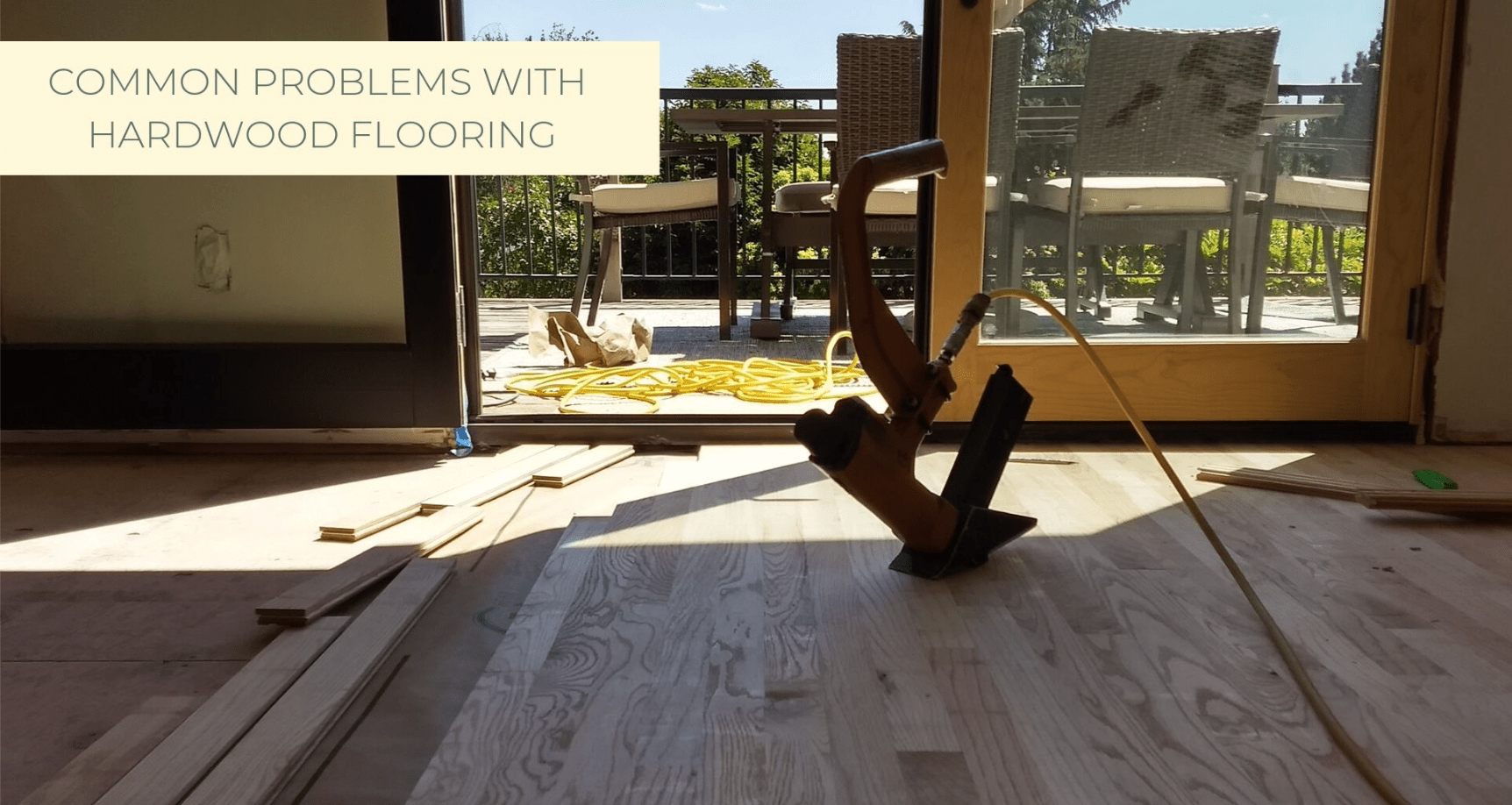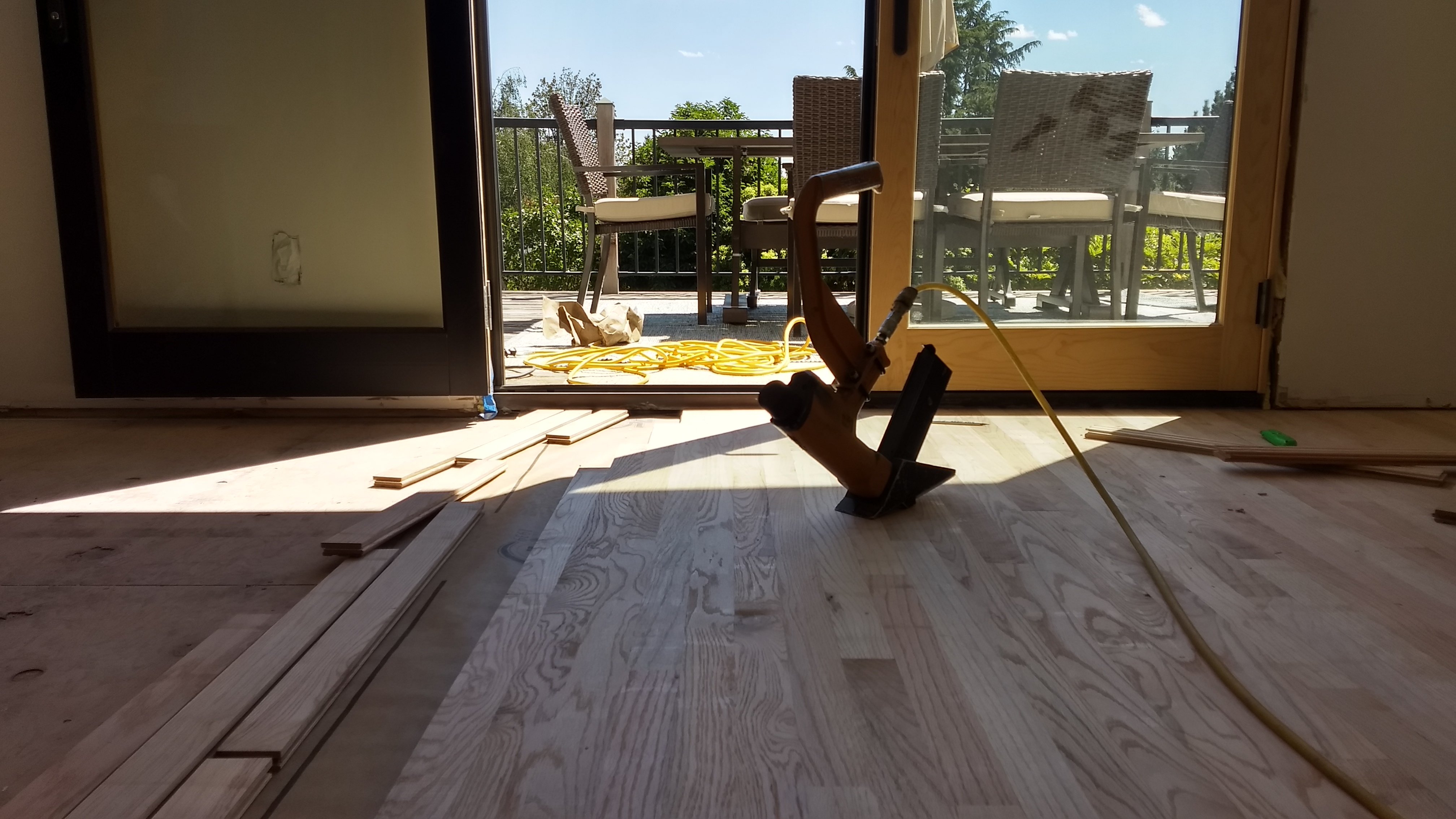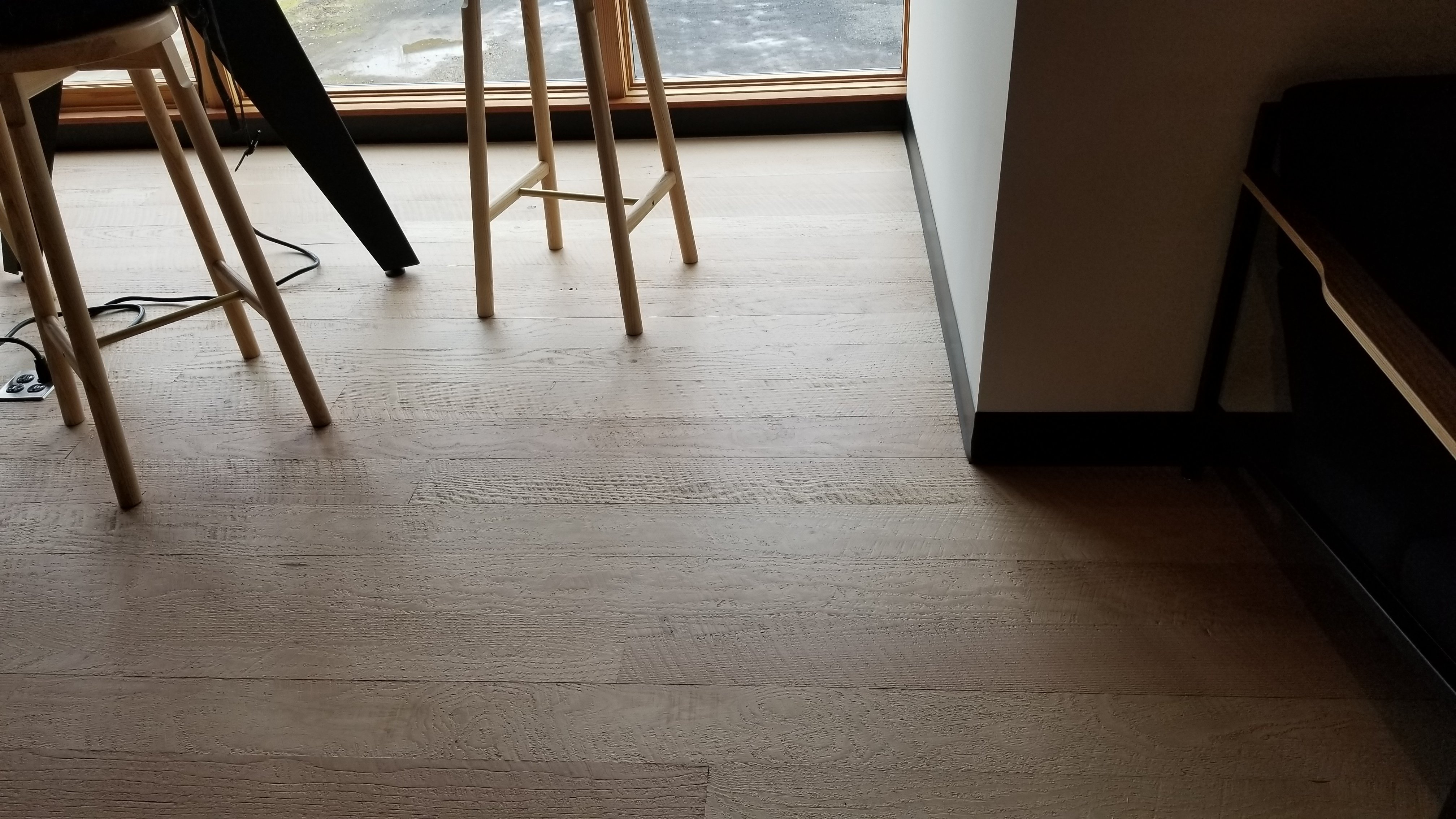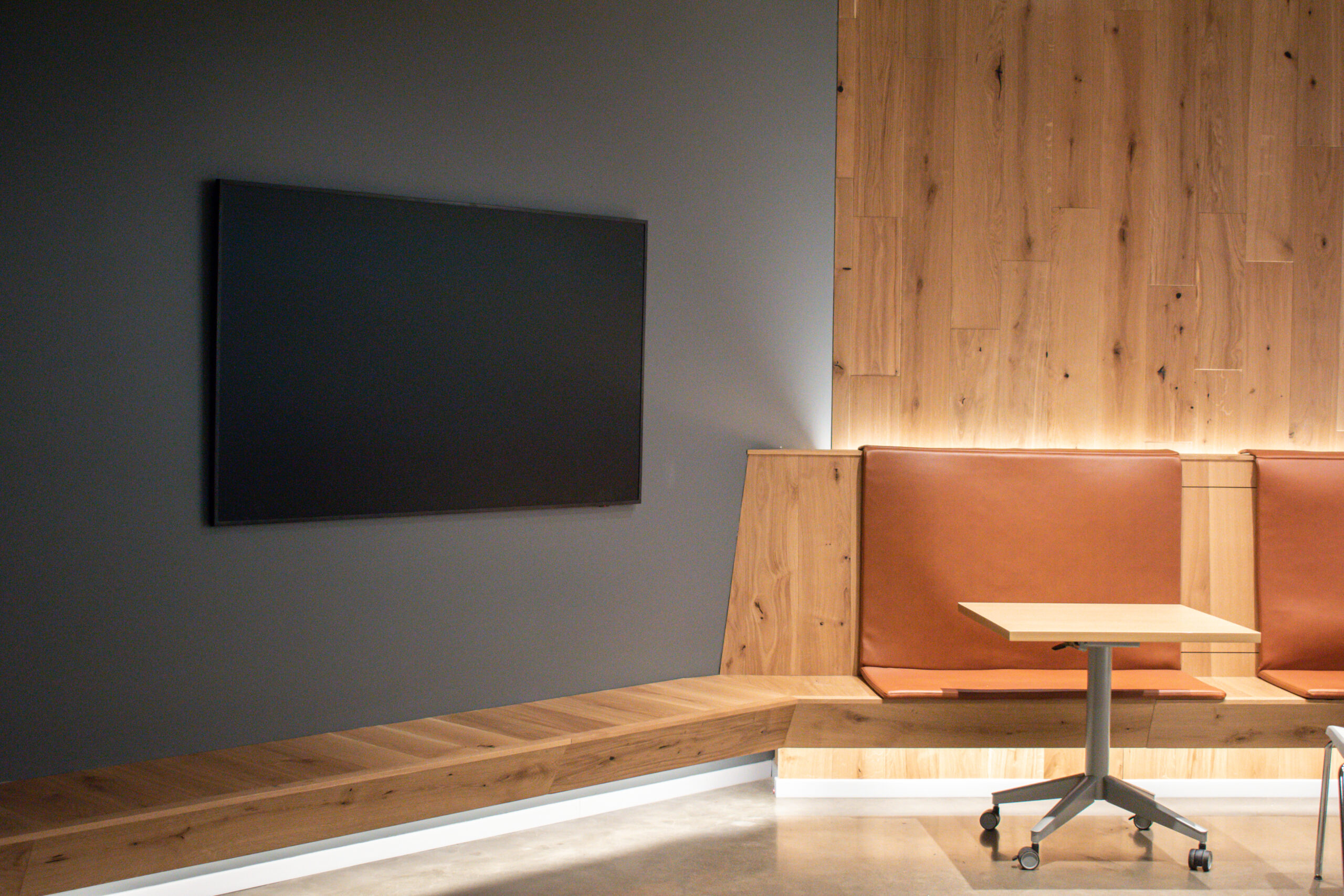
7 Common Problems with Wood Flooring
Wood flooring has the capability to bring a natural element into a living space and transforming it into something absolutely spectacular. While that’s true, wood also requires proper care and maintenance during installation and when you start to live on it, to avoid any troubles that can leave a bad taste in or mouth. Lets talk about the 7 common problems that can occur in wood flooring:

1. Cupping
Cupping is a common problem in wood flooring, which happens when the wood gains excess moisture, and the moisture becomes inconsistent in the plank. This leads the board to be no longer flat with the edges of the plank being raised compared to the middle of the plank, making it concave when viewed from above. Cupping in floor boards usually happens due to gain of moisture in wood from the sub floor (or surface applied) and since the underside cannot dry out as fast as the surface, that causes the underside to expand disproportionately to the topside, and cupping occurs.
Avoid cupping by ensuring:
- Proper acclimation of wood floors to the environment of your home before installation,
- Correct humidity and moisture levels of sub-floor,
- Selecting wood flooring right suited for your environmental conditions (for instance: if living in a place with varying temp and humidity changes, choose timbers with small movement such as narrow boards or engineered wide planks)
- Following installation instructions provided by the wood manufacturer.
2. Crowning
Wood is a natural product and it continues to respond to environmental conditions even after its installed. If the floorboards absorb humidity from the air or moisture from the subfloor, they can swell and push against each other. This may cause the centers of the boards to bulge, or crown.
Avoid crowning by ensuring:
- Correct moisture content for the expected temp and humidity of the place it is to be installed
- Avoiding extreme temperatures while installing wood floor and
- Selecting the right species of wood based on the environmental conditions of the location.
- A cupped floor is not sanded before it has completely dried.
3. Gapping
Gapping apparently happens when there is loss of moisture in wood floors which causes wood to shrink causing space between two floor boards. One of the most common reason for floors gap is when the floors are installed in high moisture/high humidity conditions. Since the boards tend do gain more moisture in these periods, there is risk of possible shrinkage when the environmental conditions change in the dry season, causing boards to shrink. Note that a certain amount of gapping is to be expected, as floors (especially solid planks) will experience some degree of seasonal movement.
Avoid gapping by ensuring:
- Proper acclimation and letting the wood to adjust to the environmental conditions before installing it.
- Making sure that the wood is being installed in the right season ideal for they type of wood you have purchased and weather you are living in.
- After installation, maintaining stable ambient conditions using heating and humidifiers etc.
- Additionally, gapping can be avoided by using dimensionally stable engineered floors for your project, which are comparatively much more resistant to gapping than solid floors.
4. Buckling
Buckling happens when the planks lift right off the floor. The probable reason for this could be due to moisture under the surface of the flooring such as the concrete floor. Other potential reasons can be flooding or leaky ceilings. This usually happens when board movement due to moisture is excessive enough to compromise the initial floor fasteners/adhesives
Avoid buckling by ensuring:
- Right moisture conditions in the home by running a properly sized air conditioner or humidifier
- Taking proper actions to reduce humidity under the house and on the subfloor
- To wipe spills immediately
- To check there aren’t any leaks saturating your floorboards with moisture and to use water sparingly when mopping wood floors.
5. Fractures
Fractures are the cracks you will see on wood floors. Fractures can be witnessed when nailing the planks to the floor or while living on it. These cracks are more common in factory-finished floors than compared to unfinished planks and panels. Fractures can also happen if the boards are dried to quickly in the kiln by lumber mills.
Prevent fractures by ensuring
- Using adapters for nailer wile installing the floors to prevent the nailer’s force from concentrating on the surface of the floorboards.
- If fractures already exist, factory-finished boards can be fixed with a manufacturer repair kit, which typically consists of wood filler, colored marker, and a bottle of finish.
- Use a high quality engineered wood floor that uses a 4-6mm wear layer over a Baltic birch core

6. Hardwood Oxidation
Wood floors exposed to strong sunlight tends to get darker due to the oxidation process. This mostly happens during the first few years of installation. Oxidation doesn’t seem to be visually trackable until you decide to move a carpet or a couch from their original position and find lighter shade floor underneath. Though once exposed to sunlight the lighter shaded part of the floor does eventually oxidizes and goes darker
Avoid or minimize hardwood oxidation by ensuring:
- Avoiding any direct sunlight falling on the floors
- A constant move or your carpets and furniture for a more balanced oxidation.
- Allow several weeks for newly exposed areas to blend with adjoining planks that may be more oxidized.
7. Loose or noisy boards
This is a common problem which can arise a few weeks from the time the wood floor is installed. The reason for this could be faulty installation or inadequate subfloors.
Avoid loose or noisy floors by ensuring
- Ensure that subfloor is firmly attached, and isn’t squeaking. A squeaky subfloor equals a squeaky wood floor.
- Make sure that the tongue and groove fit isn’t loose on planks.
- Maintain proper expansion spacing against vertical surfaces such as at the walls, around cabinets, and around door casings.
Let’s work together
Start your flooring project today.
Castle Bespoke listens. We hear it from our customers over and over again. Let us help you create your dream floor, your showpiece. Contact us now and get the process started. We make it easy and enjoyable to create a custom, sustainable wood floor.




